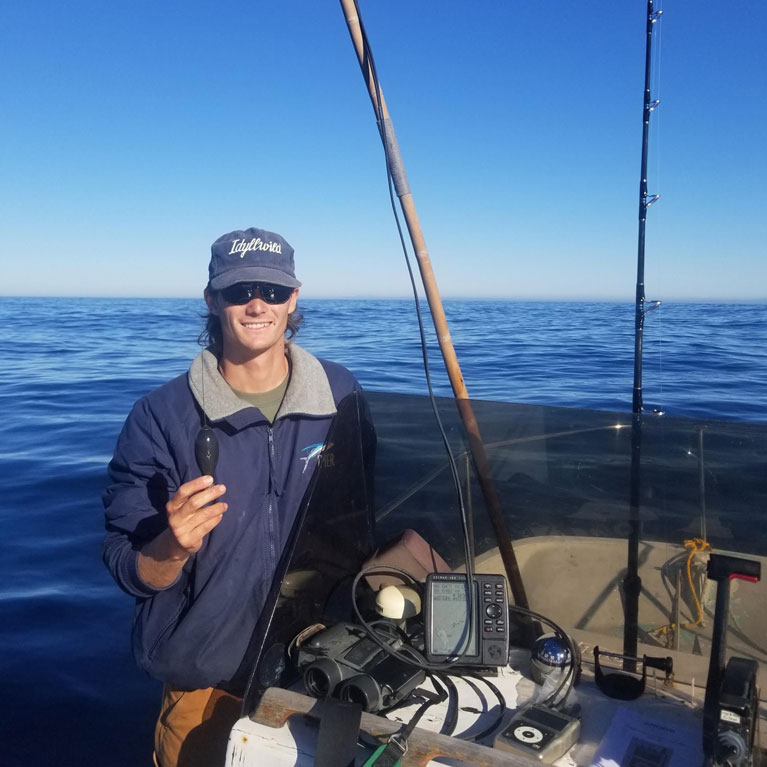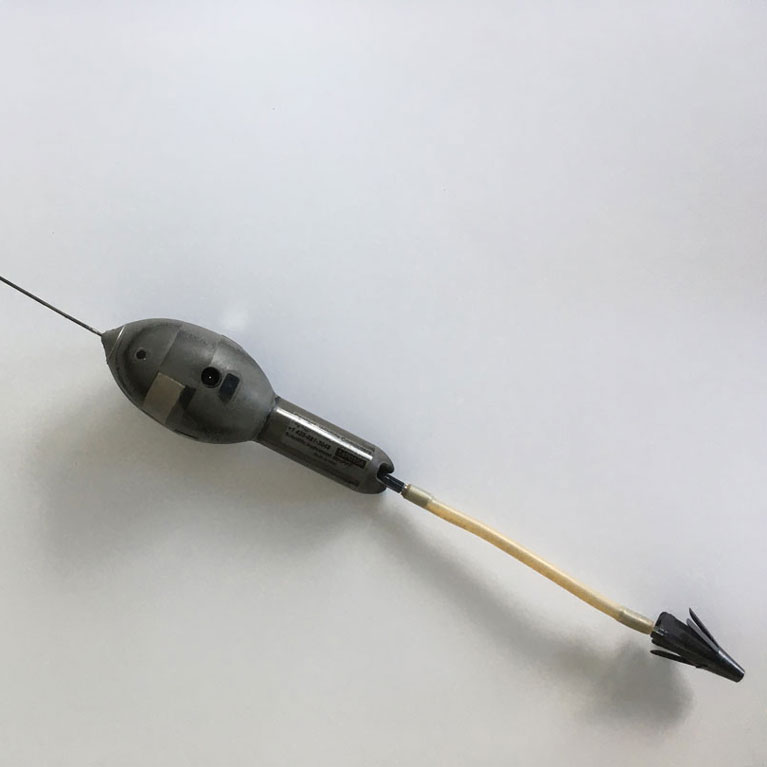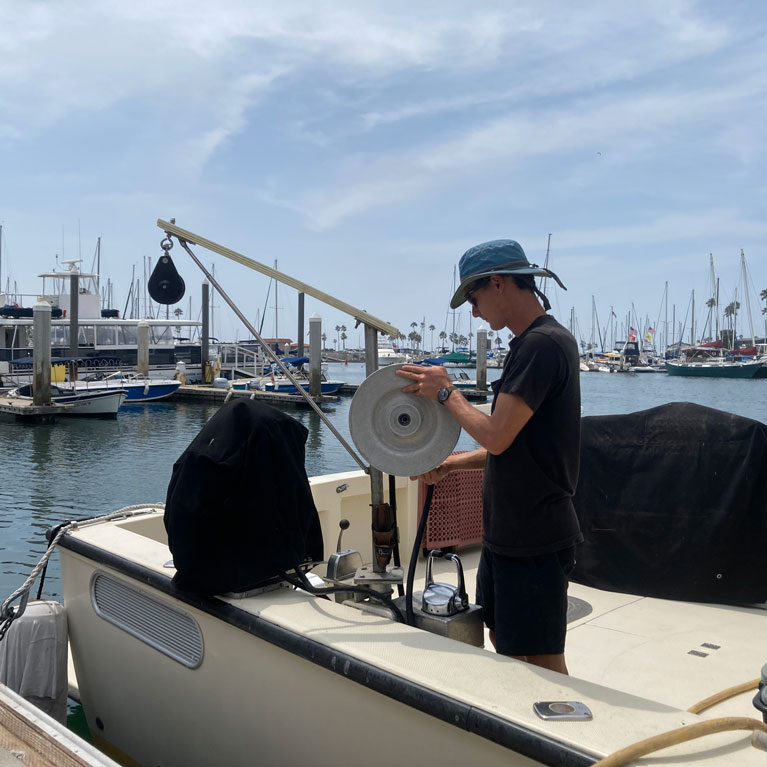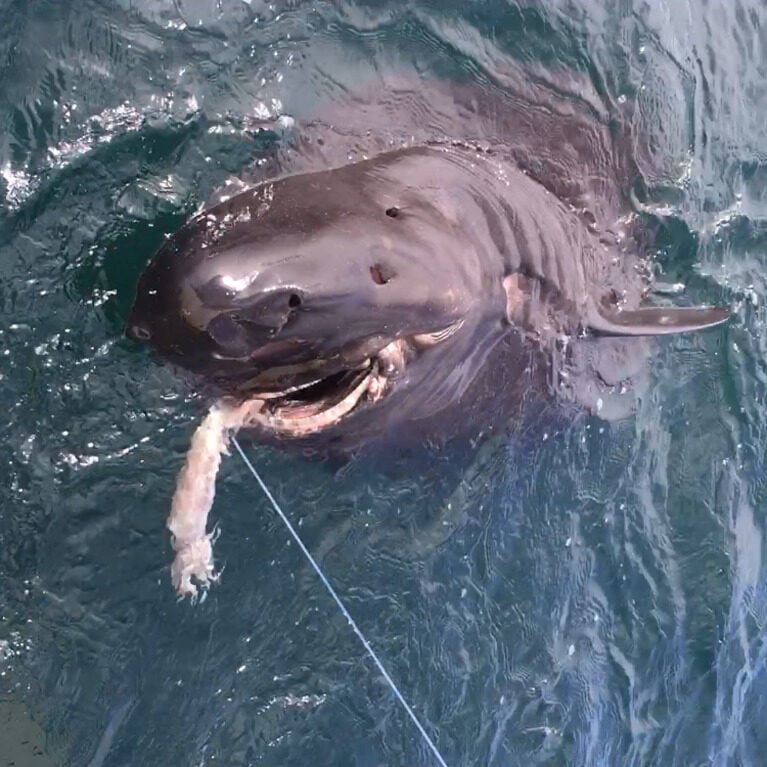Don’t be caught sleeping: proactive conservation research for Pacific sleeper sharks
Mike’s idea for satellite tagging Pacific sleeper sharks came about while working on a larger project to find better ways to harvest local swordfish around San Diego, California. When sleeper sharks started appearing regularly as bycatch on the swordfish fishery gear, Mike decided to tag them to understand how they use their deep ocean home – and how we can avoid or reduce future entanglements. By collecting information on light levels, depth, water temperature and animal movement patterns, this project can bring to the surface much-needed life history information to aid the conservation of Pacific sleeper sharks.
Although born in Texas, I’ve always felt more at home near the coast. Since we moved to San Diego when I was two, my free time has always been spent in the ocean – surfing, fishing, diving and studying. After graduating from the University of California, Santa Cruz, with a degree in marine biology and exhausting my remaining funds on a cross-country bicycle tour, I hunkered down for six long months working aboard commercial fishing vessels as a fishery observer in Alaska. Although the work was challenging, it gave me a great ground-level view of the fishing...




Don’t be caught sleeping: proactive conservation research for Pacific sleeper sharks
The key objective of this work is to capture, tag and release Pacific sleeper sharks to study their movements, behaviour and habitat preferences off Southern California. The information produced from this study will be used to advance scientific knowledge and efforts to create sustainable fishing gear alternatives.
The Pacific sleeper shark is a large deep-water shark that is slow to mature and reproduce. These factors can cause its populations to be particularly vulnerable to the effects of being caught and released on fishing gear. This project is important because it documents these effects on sleeper sharks caught by experimental fishing gear and can lead to recommendations for gear modifications and management actions to advance shark conservation.
Despite its extensive range, the Pacific sleeper shark has been little studied, as its elusive nature and deep-water habitat typically preclude easy access to observations and specimens. In fact, virtually no published studies describing sleeper shark biology exist for the proposed study region. This dearth of information can be problematic when designing fishing gear that is intended to minimise interactions with non-target catch such as sleeper sharks. Deep Set Buoy Gear is an experimental fishing gear configuration that targets swordfish in the deep ocean, but has also caught a number of these sharks. To determine the likelihood of these interactions and develop strategies to avoid them in the future, it is first important to understand the movement behaviour and habitat preferences of sleeper sharks in the study region. Past studies in as disparate regions as Alaska and the Arctic have described distinct movement patterns of sharks as they swim up and down throughout the water in search of food. It is important to verify if these same movements can be observed for sharks in the Southern California region or if they exhibit different foraging behaviour. This information will guide scientists, managers and fishers to make the most informed decisions possible when faced with questions ranging from policy to gear design to fishing strategies.
The successful completion of this project relies not only on gathering novel and valuable information about Pacific sleeper sharks caught using Deep Set Buoy Gear, but also effectively communicating results and implementing real changes gleaned from the project’s findings.
The main activity in this project aims to tag and release up to five Pacific sleeper sharks and document the biological and environmental conditions under which they are caught. The next objective involves the study of the tag data to see what conclusions can be drawn from shark movement behaviour and what next steps can be identified to promote sleeper shark conservation and research. The final objective of the project is the communication of study results to the scientific community and the public through outreach channels facilitated by the Save Our Seas Foundation, PIER and the Oceanside Sea Center and through a peer-reviewed article produced as part of a Master’s thesis.

